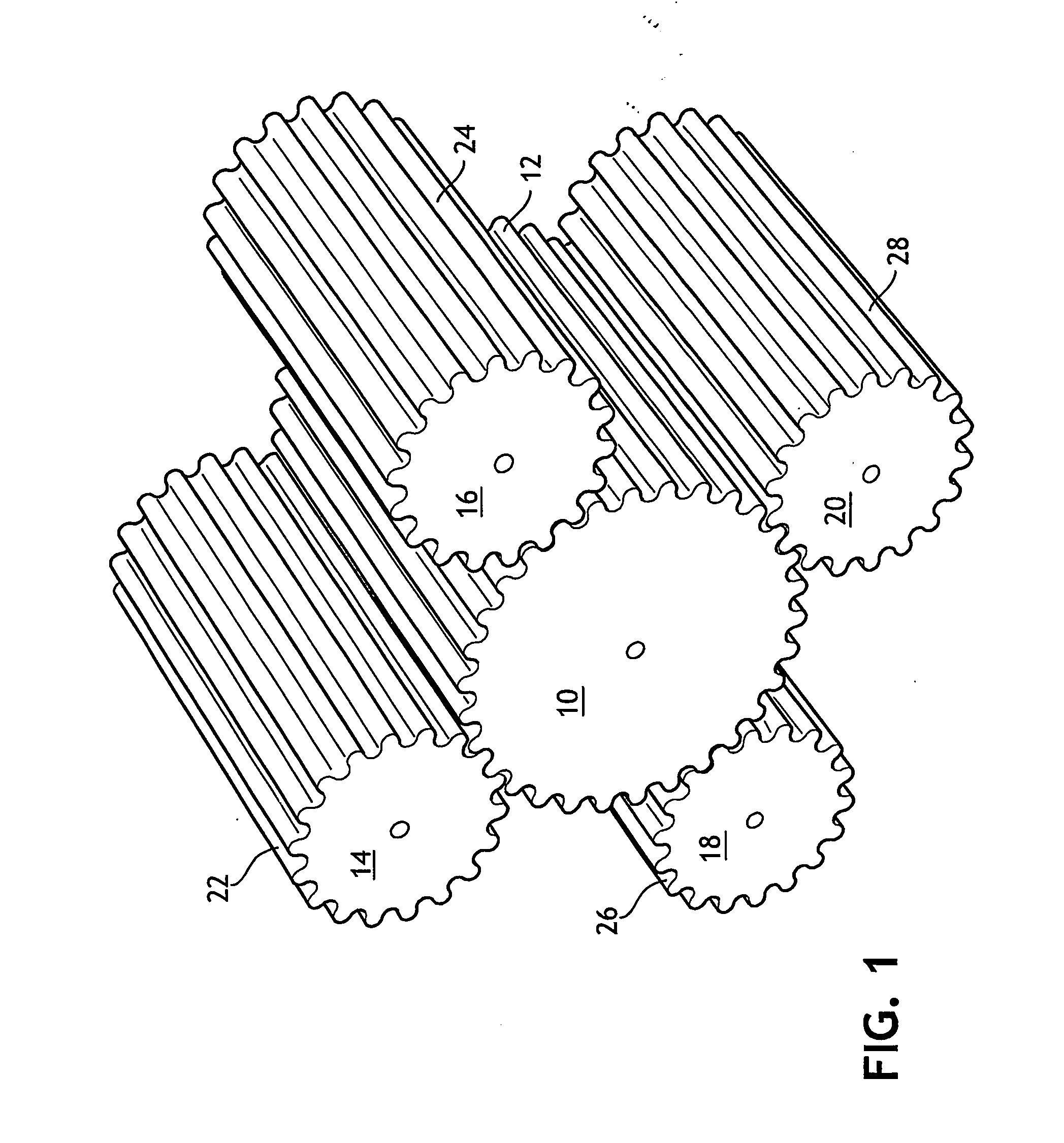Device and process for treating flexible web by stretching between intermeshing forming surfaces
a technology of flexible webs and forming surfaces, which is applied in the direction of dough shaping, manufacturing tools, food shaping, etc., can solve the problems of one or both layers, increasing stiffness or noise, and providing only a limited degree of flexibility in treating webs, so as to reduce the level of film or nonwoven tears or defects, the degree of flexibility is large, and the effect of wide variation of stretch
- Summary
- Abstract
- Description
- Claims
- Application Information
AI Technical Summary
Benefits of technology
Problems solved by technology
Method used
Image
Examples
example 1
[0056] In Example 1 a film / nonwoven laminate was created. The film layer contained calcium carbonate dispersed in a carrier resin, and an elastomeric letdown resin. Calcium carbonate, for example, available from OMYA, Inc., North America of Proctor, Vt. as designated OMYACARB® 2 SS T having an average particle size of 2 micron, top cut of 8-10 microns and about 1% stearic acid coating was used. The calcium carbonate (75%) and carrier resin (25%), Dowlex 2517 LLDPE (ASTM 1238, Condition E melt index of 25 and density of 0.917 g / cc), compound was then blended in a single screw conventional extruder with 33% of Septon 2004 SEPS triblock thermoplastic elastomer letdown resin to provide a final calcium carbonate concentration of 50.25% by weight. The Dowlex® polymer is available from Dow Chemical U.S.A. of Midland, Mich. The Septon polymer is available from Septon Company of America of Pasadena, Tex.
[0057] This formulation was formed into a film by casting onto a chill roll set to 38° C...
PUM
| Property | Measurement | Unit |
|---|---|---|
| Fraction | aaaaa | aaaaa |
| Fraction | aaaaa | aaaaa |
| Fraction | aaaaa | aaaaa |
Abstract
Description
Claims
Application Information
 Login to View More
Login to View More - R&D
- Intellectual Property
- Life Sciences
- Materials
- Tech Scout
- Unparalleled Data Quality
- Higher Quality Content
- 60% Fewer Hallucinations
Browse by: Latest US Patents, China's latest patents, Technical Efficacy Thesaurus, Application Domain, Technology Topic, Popular Technical Reports.
© 2025 PatSnap. All rights reserved.Legal|Privacy policy|Modern Slavery Act Transparency Statement|Sitemap|About US| Contact US: help@patsnap.com



